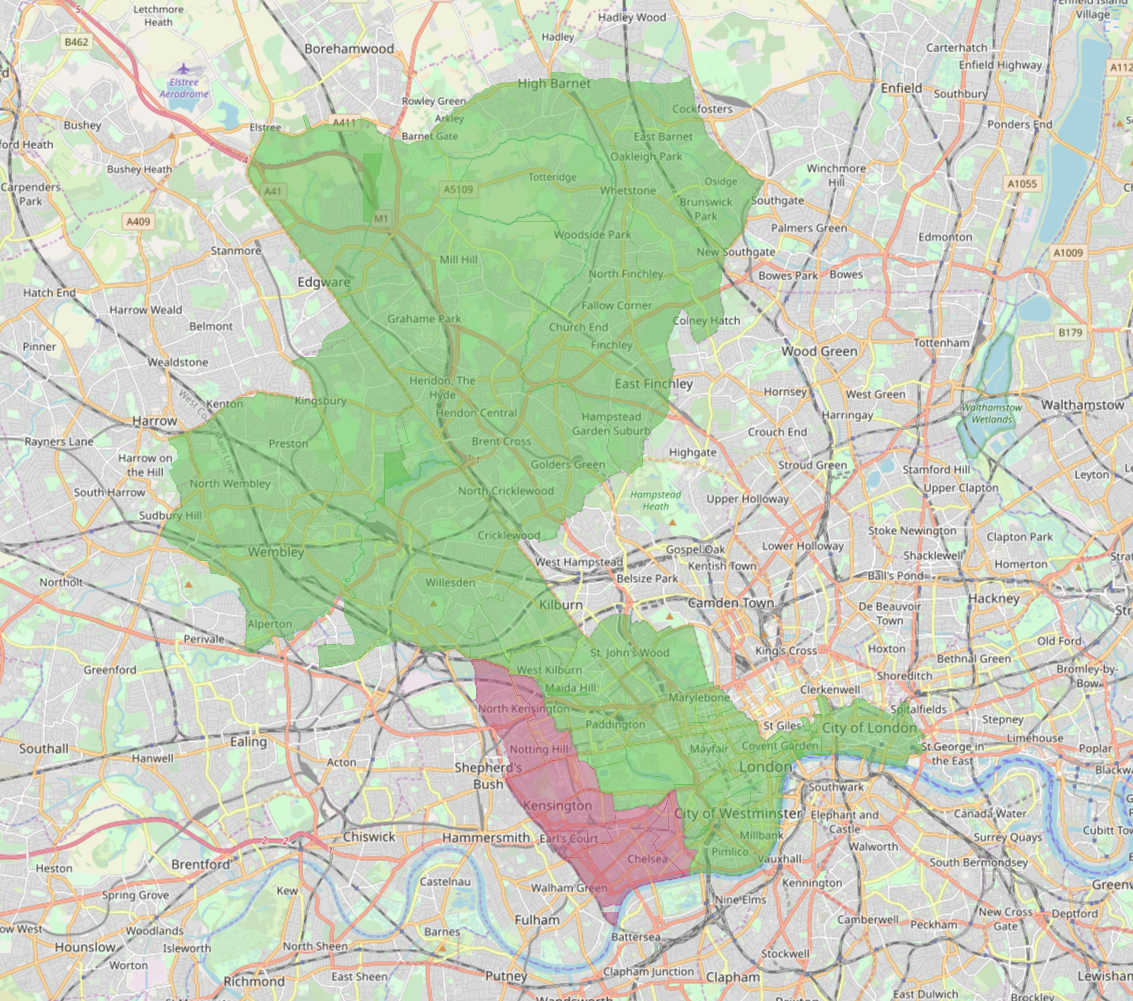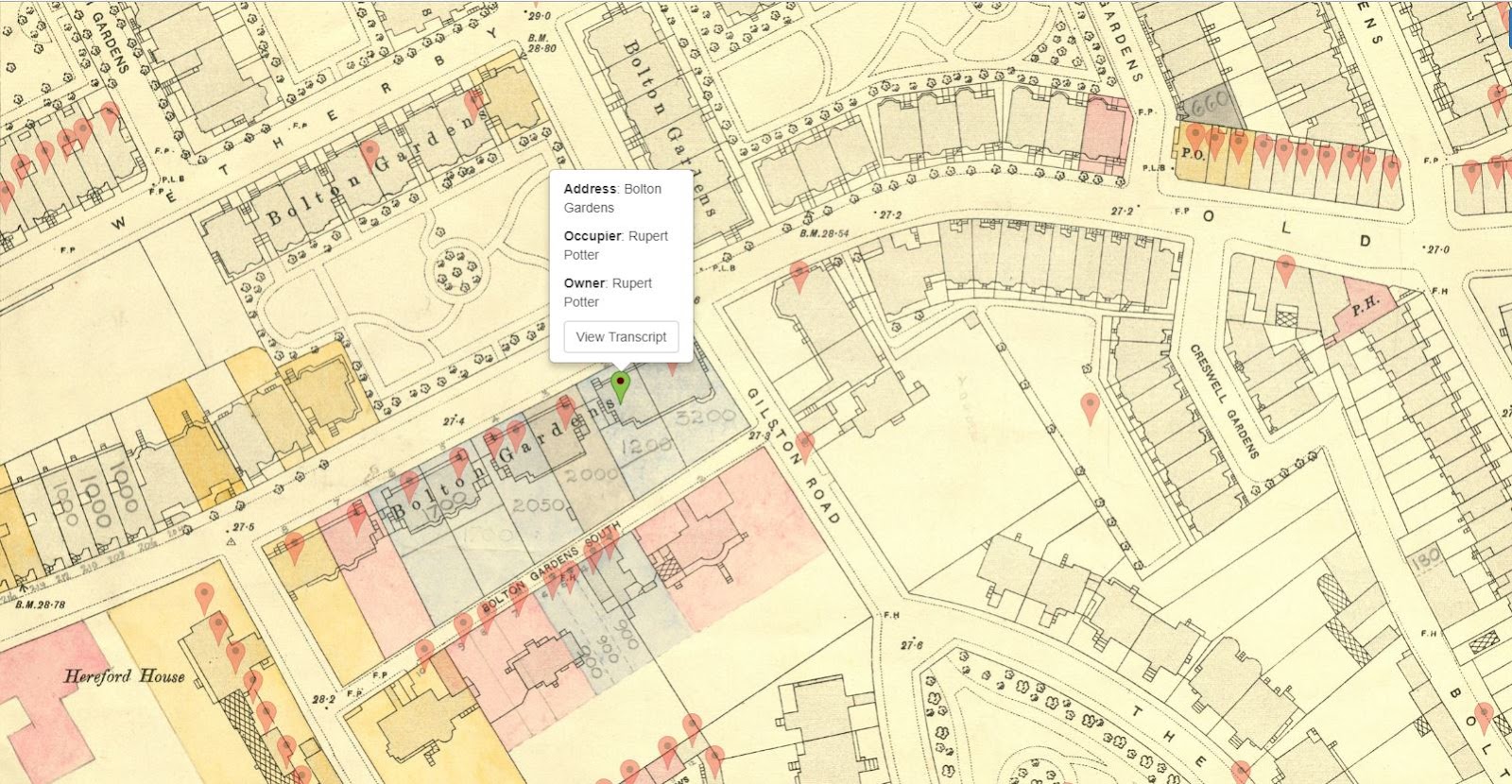
Map Showing the areas covered in this latest release (red) and current total coverage (green)
TheGenealogist is releasing the field books and detailed annotated maps for Kensington and Chelsea as the next part of this exciting record set, The Lloyd George Domesday Survey - a resource that can be used to find where an ancestor lived in 1910. Covering the areas of Brompton, Chelsea East, Chelsea West, Holland Park, Notting Hill East, Notting Hill West and South Kensington the newly added records contain 49,608 individuals who owned or occupied property in this upmarket part of London.
This unique online combination of detailed maps and residential data held by The National Archives is being digitised by TheGenealogist and can locate where your ancestor’s house had been on large scale (5 feet to the mile) hand annotated maps which show the outlines of property plots.

Beatrix Potter's childhood home at 2 Bolton Gardens, Kensington

Details of the Potter’s lavish family home, including 6 bedrooms, 2 dressing rooms, 3 WCs and a servants hall
Previously, researchers would often not be able to find where ancestors lived for several reasons. Road names changed over time, the Blitz saw areas bombed to destruction, developers changed sites out of all resemblance from what had stood there before and lanes and roads were extinguished to build estates and office blocks. All this means that searching for where an ancestor lived using a website linked to modern maps can be frustrating when they fail to pinpoint where the old properties had once been.
- TheGenealogist’s new release will link individual properties to extremely detailed ordnance survey maps used in 1910
- Locate an address found in a census or street directory down to a specific house
- Fully searchable by name, county, parish and street.
- The maps will zoom down to show individual properties on roads as they existed in 1910
Complementing the maps on TheGenealogist are the accompanying field books that will also provide researchers with information relative to the valuation of each property, including the valuation assessment number, map reference, owner, occupier, situation, description and extent.
This huge project includes over 94,500 Field Books, each having hundreds of pages to digitise with associated large scale IR121 annotated OS maps, and is therefore ongoing.
The initial releases from TheGenealogist have begun in London and will continue to expand outwards across the country with cross linked maps wherever they are available.
Find out more at: TheGenealogist.co.uk/1910Survey/
Or read the feature article: Kensington and Chelsea Lloyd George Domesday Survey finds famous authors and actors https://www.thegenealogist.co.uk/featuredarticles/2019/kensington-and-chelsea-lloyd-george-domesday-survey-finds-authors-and-actors-1069/
